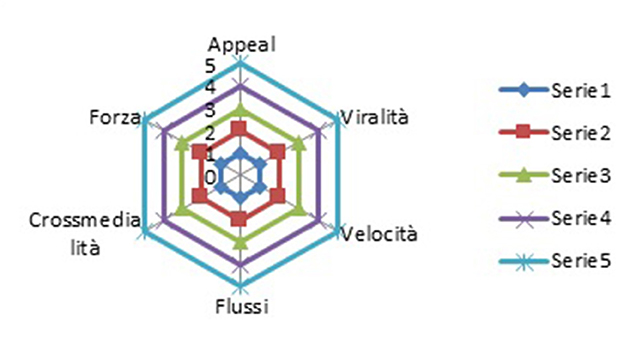The Disinformation Ecosystem: Manipulating Consensus in the Platform Society
The digital revolution, envisioned as a catalyst for social capital growth, presents a starkly different reality in the post-pandemic era. Platformization, characterized by data hoarding and algorithmic opacity, has become a breeding ground for manipulation, eroding public trust and democratic processes. This manipulation extends beyond mere disinformation, encompassing the strategic construction of narratives that exploit the vulnerabilities of a hyper-connected yet increasingly isolated society. The very tools intended to empower individuals are now instruments of control, raising critical questions about the future of democratic participation and the distribution of social capital.
The evolution of the digital landscape from McLuhan’s "the medium is the message" to Castells’ "the network is the message" underscores the profound shift from technology as a tool to technology as a relational environment. This transition has ushered in the age of informational society, where digital capitalism reigns supreme. The flattening of boundaries and the emergence of filter bubbles have created an environment ripe for exploitation. Platforms, operating under opaque dynamics, profit from the commodification of human experience, transforming behavior into data and data into marketable goods. This new form of surveillance capitalism stands in stark contrast to earlier, more optimistic visions of networked individualism and participatory culture.
The manipulation of public opinion is not a new phenomenon, but the scale and sophistication of its current manifestation pose an unprecedented threat to public life. Disinformation campaigns target the very foundations of democracy – politics, science, and economics – exploiting the speed, virality, and cross-mediality of online platforms. The ability of misinformation to seamlessly traverse different media platforms, amplified by algorithms and fueled by confirmation bias, has created a powerful and pervasive force that undermines trust in institutions and erodes the ability of individuals to discern fact from fiction. This "misinformation industry" thrives on the polarization of opinions, further isolating individuals within echo chambers of like-minded individuals and reinforcing pre-existing beliefs.
The dynamics of online platforms, designed to maximize engagement and data collection, inadvertently contribute to the spread of misinformation. Features like likes, shares, and comments, intended to foster connection, become tools for reinforcing group narratives and validating emotionally driven responses. The pursuit of validation within online communities overrides the critical evaluation of information, creating a breeding ground for the "pathology of credibility." Within these closed groups, plausibility structures are distorted, and the search for truth is replaced by the acceptance of alternative facts. The fear of isolation drives individuals further into these echo chambers, reinforcing a cycle of misinformation and polarization.
The pervasiveness of misinformation is particularly concerning given the declining ability of individuals to distinguish fact from opinion. In a world where fewer than one in ten students in OECD countries can differentiate between the two, platforms like TikTok, with a predominantly young user base, become potent vectors for the dissemination of harmful content. Videos promoting false health claims, conspiracy theories, and unsubstantiated rumors circulate widely, racking up millions of views and reinforcing dangerous misconceptions. The use of seemingly authoritative sources, scientific-sounding language, and powerful keywords further blurs the lines between credible information and manipulative propaganda.
The "fake news hexagon"—comprising appeal, virality, speed, flow, cross-mediality, and strength—provides a framework for understanding the multifaceted nature of misinformation. Applying this model to real-world examples reveals the alarming efficacy of disinformation campaigns on platforms like TikTok. Videos promoting false narratives about vaccines, cancer cures, and the origins of diseases achieve widespread circulation, exploiting the platform’s algorithm-driven search engine and the vulnerabilities of its young user base. This analysis underscores the urgent need for greater media literacy and critical thinking skills, particularly among young people, to combat the insidious spread of misinformation.
The rise of the platform society has coincided with a growing crisis of democracy. The erosion of trust in institutions, coupled with the increasing difficulty of navigating the information landscape, has led to a fragmented and polarized society. Individuals, driven by the fear of isolation and the pursuit of validation, retreat into homogenous online communities, where their pre-existing beliefs are reinforced. The principles of mass self-communication, once envisioned as empowering tools for social change, are distorted into mechanisms for manipulation and control.
The challenges posed by the disinformation ecosystem require a multi-pronged approach. Strengthening media literacy and critical thinking skills is crucial, particularly among young people. Platforms must take greater responsibility for the content they host, implementing measures to combat the spread of misinformation and promote transparency in their algorithms. Furthermore, fostering open dialogue and critical engagement with diverse perspectives is essential to break down the echo chambers that perpetuate misinformation and polarization. The future of democracy hinges on our ability to reclaim the digital space as a forum for informed discourse and participatory citizenship, rather than a breeding ground for manipulation and control.


